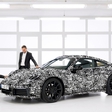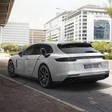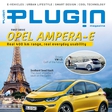
Right now Porsche has electric cars only in the form of plug-in hybrids, with Panamera and Cayenne. You have launched new generation of Panamera plug-in hybrid. How important is it for Porsche?
In Panamera we first had a parallel hybrid with a very limited electrical range, then there was the first plug-in hybrid Panamera, which had an electric range of about 30 kilometers. It was quite successful, as plug-in sales were about 10% of all Panamera sales. We're sure that the new Panamera plug-in hybrid will have much bigger share, as we have increased EV range to around 50 kilometers and it also has more powerful electric motor. So we're expecting a much bigger share.
Did you start the design of new Panamera plug-in hybrid system with a blank sheet of paper or did you just try to improve on technology already existing?
As with the whole Panamera, the hybrid system is completely new. We took almost nothing from the previous version. And Cayenne will get the same system.
Do you think these 50 kilometers of electric range is the number that will satisfy most drivers now and in the future, or will this range have to grow even more?
The feedback from drivers of the first generation of Panamera plug-in hybrids was that 30 kilometers is not adequate yet, 50 are much better. The question of the electric range for a plug-in hybrid car is always the question of weight and cost. It is of course possible to have more electric range in a plug-in hybrid; you just need to put more batteries in. But that is more expensive, weighs more and has other drawbacks, like smaller trunk space, for example. I think this jump from 30 to 50 kilometers electric range we just did is an important step, but if there are better batteries available in the future, with more energy stored in the same volume and mass, we would go for higher electric range,yes. But going for a 150 kilometers range does not make sense, there you're in the range of EVs, but still have the cost and complexity of an IC engine.
Are plug-in hybrids also important for Porsche, as they bridge the philosophical gap between a "proper", ICE Porsche (sports) car and EVs? Will they mean that it will be easier for you to get your customers to accept EVs?
We have announced only one EV so far; all other Porsches remain cars with internal combustion engines. And this will remain for quite some years, as we know that there are and will be areas of the world where EV just will not be feasible, and also there'll be drivers that will want do drive ICE Porsches.
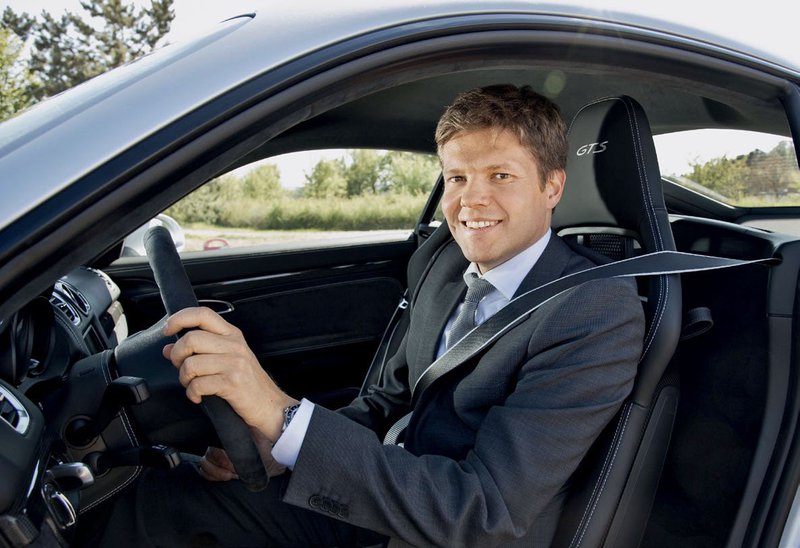
How do you manage this transfer to EVs, different sound, and different driving characteristics? Is this something similar to the big step Porsche took going from air- to water-cooled engines in the 911?
When we announced Mission E EV in Frankfurt in 2015, the response was overwhelmingly good. People said that you could see that it was an EV, but you could also see that it was a sports car and also a Porsche. In terms of performance it is a Porsche, no doubt, and the there's a big question about the sound. What to do with the soundof an EV? I think there are two answers to that. There is a sound of an electric motor. It's totally different than ICE sound, but it has a sound, and it is emotional, powerful. There are some discussions about having an artificially produced typical Porsche sound, or just enhancing the e-motor sound. What I know is that we will have a typical Porsche EV sound in the future, but we're still discussing about what exactly will it be. In any case it will be closely related to technology we'll use. There'll be no totally artificial sound, not customizable like ringtones for your mobile you can download. We will design it, but it will be strongly based on technology in the car – and you will not find an "optional V8 sound" in our EV car.
The characteristics of ICE engines are vastly different from one to another, and these characteristics in many ways define how we perceive a car, especially with sports cars. On the other hand, electric motors are quite similar one to another: big torque, flat torque/ power curve. How will you differentiate Porsche EVs from other cars in this area?
There are basically two types of electric motors: PSM (synchronous) motors with permanent magnet and asynchronous motors. PSM motors are offering their performance on a reproducible level. This means you can go from 0 to 100 km/h in 4 seconds, again and again. ASM motors lose their power, as they get hotter under load. That's why we at Porsche decided to go with PSM motors, as we are producing sports cars and they need to be able to go fast for longer periods of time. For most manufacturers and normal use EVs, PSM is too expensive, but for us it's a good solution because of performance and lower weight. So that's the big difference – not the only one, but very important.
So it's easier for you to do these new technologies, as you have more breathing space when it comes to costs and prices. You don't need to do everything as cheap as possible, as your cars are premium and customers expect higher prices anyway?
New technologies are always easier to introduce top-down, and our 918 Spyder plug-in hybrid super sports car is a good example. So yes, it's easier for us than for a big volume manufacturer – but it also means that our customers expect perfection, and with new technologies that's quite a demanding task.
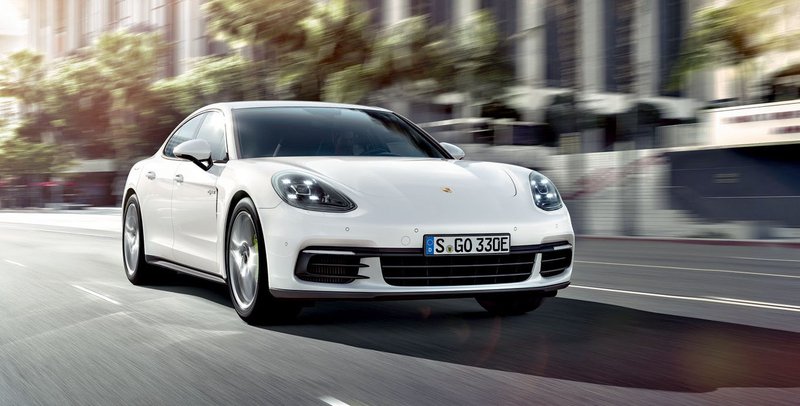
So how long do you think Porsche will need to expand these technologies to all its range, to cheaper models?
We haven't decided about that yet. We have decided about Mission E, a four-door four-seater EV sports sedan, somewhere between Panamera and Cayenne. If you're talking about a smaller, cheaper model, for example Macan, we're closely monitoring the market, seeing what others are doing, and we of course have discussions and planning about electrification of other models, not only as plug-in hybrids but also as full EVs, but no decision has been made yet. What is more important is that we decided to build Mission E on a brand new platform. We didn't take Panamera or some other platform; we went for a completely new one, a purpose-designed EV platform. That means that there will not be a plug-in hybrid or even conventional version of Mission E, even though some customers wanted to have it with a V8, for example. But the answer is no, as it is a purely EV platform.
Can or will it be used for other EV models?
Yes, of course it can. Battery and bottom of the car are the basics, but you can change wheelbases, body styles, so it can serve for other new models. We have not, as I said, decided about them yet, but if they come, they will be purely EV models. There'll be no compromises to enable use of more conventional powertrains, as that would mean more weight and more costs.
911 has the engine in the back, 917 in the middle. How would you emulate car characteristics that those architectures bring with an EV car? Place batteries in the back with 911, for example?
Where will Mission E be in this respect? Mission E will have 2 engines, one in front, one in the back and 4 wheel drive, for example. But it will have characteristics of 4-door sedan, smaller than the Panamera.
How much does designing an EV car differ from development you have used for ICE cars?
The process itself isn't different, but the inputs we start with are very different. When doing that the engineers have to integrate, for example, a big V8 in the front, driveshaft, and big gearbox. With EV you have smaller motors, no big gearbox, so they have to make less compromises. Same process, but with different factors, If you look at Mission E, it's a very low car with a very low front end. You can't do that with a big V8 or V6.
What about suppliers? Do you have more outside suppliers with an EV car or less?
We are of course working with suppliers as you would expect, batteries included. I think that the split between in-house development and one done by suppliers is actually very similar to the split we have with our ICE cars.
Is the technology you will use in Mission E, a sports sedan, already developed, light, powerful enough to use in a potential proper Porsche sports car, like a 911 EV car?
If you talk about longitudinal performance, so 0 to 100-kmh acceleration, for example, that would work. But that only does not make a Porsche sports car. And if you talk about track performance, many laps on the track, Nurburgring Nordschleife maybe, so a proper sports-car use, the current the answer is no. Battery packs are quite heavy, they will make Mission E weigh a little above 2 tons, and the cells in batteries would have a hard time producing the power that would be required of a proper Porsche sports-car, something similar to what a 911 Turbo would offer the driver on a racetrack.
So how long will it take to get there?
Well, Mission E will be the fastest EV on Nordschleife. But when we talk about proper sports cars, racecars, it will take a couple more years. Will those cars, or for that matter, Mission E need a gearbox to achieve those speeds? You don't need one; the question is if you want one. It allows having both, great acceleration and high top speed, but Tesla achieves great acceleration and 240-kmh top speed without one. Higher top speed is more demanding, and we have said that Mission E will go over 250, but still, it's more of a question what you want, not what you necessarily need. It's more weight, but if it brings more benefit than drawbacks, then it's logical to use it, and it could also bring differentiation for our brand.
So you could use it? Yes.
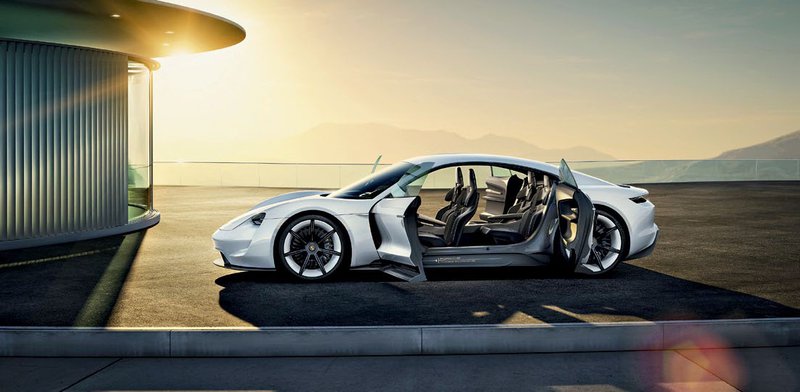
What about using one engine versus using two or more, maybe one for each wheel in sportscars?
In Mission E we went for two engines, one in front, one in the back. We haven't had the discussions about how potential 911 EV engines would be placed yet, but for Mission E, so until end of this decade, we're convinced that one in front and one in back is the way to go. The development of electric motors and batteries is so fast that it's hard to predict farther than that.
What about FCEV?
Why does BEV look to be the main technology in the (near) future? Well, some of our competitors have been trying with FCEV for quite some years, but it does not seem to be catching up with BEV technology. I thing one main point is infrastructure, which is expensive to establish. EV infrastructure is also expensive, but less so. Tesla has shown that you can build your own highpower network and German and other manufacturers have set up a similar project to have a lot of high-power charging stations worldwide. We will all need this, regardless of brand. Our customers still have range anxiety and having a lot of charging stations helps a lot, of course. Today it takes 30-45 minutes to charge from 0 to 80 percent; with Mission E we will reduce that to something like 15 to 17 minutes.
Do you think 150 kW charging stations from this manufacturers' initiative will be enough?
What power will they have to be eventually? Somewhere between 250 and 250 kilowatts, with 800 V voltage. That's what we're planning for Mission E, 80% charge that translates to 400 kilometers, in less than 20 minutes. That is convenient. You drive 400 kilometers, stop for a toilet break and a coffee and charge the car for the next 400 in that time. But you need a developed infrastructure for that. And here is when our connectivity services and digitalization come into play. If you need to charge your car you need to know in advance that you will be able to, that there will be a free charging spot, you could be able to reserve it in advance. The car could do that for you, when it knows where you are going and how much electricity is left in the battery.
Car to X connectivity is the key here, so the car knows where it's going, what is on the way and so on?
Exactly. When the car knows what the traffic conditions are, where the charging stations are, if they will be free and so on, the travel will be as easy as it is now. The car will calculate where to charge and how much, reserve the spot for the time you'll be there, for the time you will need to charge it. The car will have to communicate. It's a complex system involving cars and their navigation system, road infrastructure, charging stations, but once it works, that will be it. That's the future.

